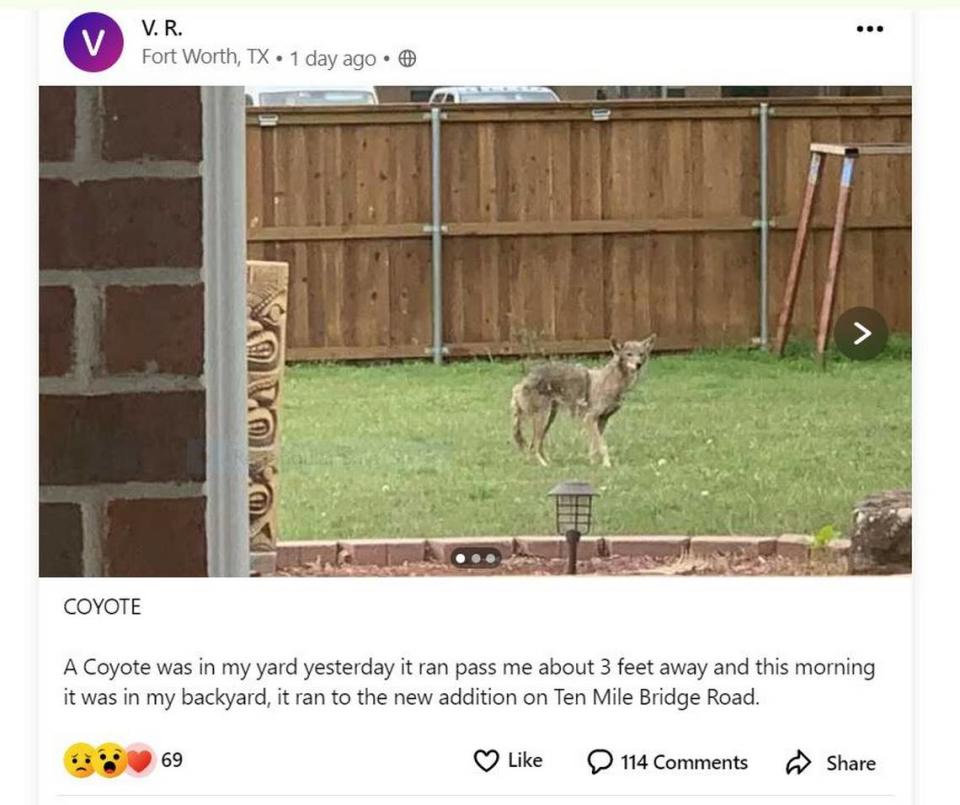How did this coyote get inside a Fort Worth backyard? It got tongues wagging on Nextdoor
If coyotes seem to be everywhere in Fort Worth these days, it’s probably because they are.
Everyone, it seems, has a coyote sighting story to tell.
A post on Nextdoor earlier this week showed a coyote in a Fort Worth backyard eliciting over 100 comments about the animal.
“A Coyote was in my yard yesterday it ran (past) me about 3 feet away and this morning it was in my backyard,” V.R. posted on Nextdoor earlier this week.
Many of the people commenting on the post urged people to not feed the wild animals: “Do not feed one, call Animal Control to come relocate it to an area it can survive in, if it can be saved.”
Several were worried about the animal’s appearance.
“That poor baby is skin and bones,” a commenter said. “He’s dying. Someone who spots him call Park services and get him rescued.”
How the animal got in the backyard was a popular query. “Wonder how he got inside the fence??” a commenter asked.
Another responded: “They scale fences really well. Which is why it isn’t safe to assume your pets are safe outside due to a fence.”

Native to North America, coyotes are smaller cousins to the wolf. They are a resilient species that can be found roaming ranch land or creeping around darkened urban street corners and alleys. They are opportunistic feeders — equally content in killing a pet cat or foraging through a pile of garbage.
But when urban coyotes become habituated, shedding their fear of humans, then conflicts occur.
“And that becomes a human safety problem,” said Mike Bodenchuk, a wildlife biologist who heads the Texas Wildlife Services Program, a consortium of federal and state agencies working on wildlife issues. “We’ve seen that in the Metroplex, over and over. Somebody’s feeding the coyotes and then all of a sudden they start hanging around bus stops for kids and they start killing pets in backyards. And that’s a problem. That’s a growing human safety problem.”
Range of urban coyotes
An urban coyote’s range is roughly one square mile, or 600-650 acres, according to Bodenchuk. City coyotes can thrive in a much smaller area because of an abundance of food.
As the breeding season rolls around, the adult male of the pack will aggressively defend its territory.
“He keeps other males out of there from the previous year,” Bodenchuk said. “And the closer we get to pups being born in April and May, they get very aggressive towards other canines in their territory.”
What to do when around coyotes
Be as big and loud as possible. Do not run or turn your back. Wave your arms, clap your hands, and shout in an authoritative voice.
Bodenchuk said shoot the animal with a paintball gun if you spot one in your backyard.
Pick up leftover pet food if you feed pets outside.
When you do come across a coyote, call Fort Worth Animal Care & Control or the police department.

